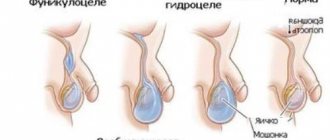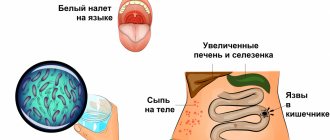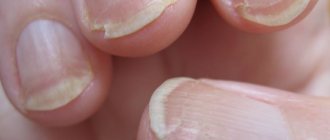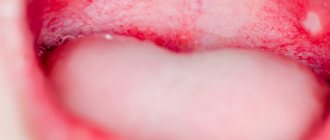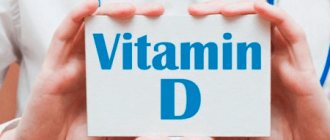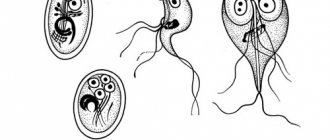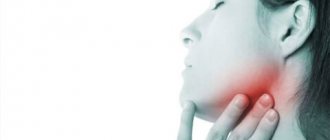Description
Mesadenitis is an inflammatory disease of the lymph nodes of the mesentery of the small intestine.
The abdominal cavity contains the longest section of the intestine, the small intestine. Its entire surface is covered by a special membrane, which on one side is folded and attached to the back wall of the intestine. This fold contains many vessels and lymph nodes that contribute to the normal functioning of the intestines.
In total, there are more than five hundred lymph nodes in the abdominal cavity. They are needed to prevent any harmful bacteria from passing through the intestinal wall and thereby preventing bacteria from entering the bloodstream. If infections affect the lymph nodes themselves, inflammation begins, which is called mesadenitis. During inflammation, the direct function of the lymph nodes is disrupted, the filtration of harmful bacteria stops, so they freely penetrate into the intestines.
The disease develops when infection enters the lymph nodes of the mesentery, where microorganisms multiply. In response to this, inflammation of the lymph nodes occurs. The cause can be both bacteria (Escherichia coli, staphylococci, streptococci, salmonella, Mycobacterium tuberculosis) and viruses (enterovirus, adenovirus, Epstein-Barr virus, cytomegalovirus).
Depending on the course of the disease, acute and chronic mesadenitis are distinguished. The acute form is characterized by sudden development and severe symptoms. The chronic course is accompanied by a less pronounced clinical picture for a long time.
Mesadenitis occurs more often in children than in adults. This is explained by the fact that the child’s body is not able to fully cope with the attacks of infections. The disease is more often detected in the autumn-winter period, when the number of patients with ARVI increases.
Pathological anatomy
Macroscopically, with M., swelling of the mesentery of the small intestine is usually observed, in which, more often, enlarged, soft-consistency lymph is found in the area of the ileocecal angle. nodes. With purulent M., an infiltrate with necrosis and purulent fusion is formed at the site of lymph nodes. Gistol, examination of lymph nodes of the intestinal mesentery reveals lymphoid hyperplasia, leukocyte infiltration, and in tuberculous M. - a picture of specific inflammation. The progression of the process may be accompanied by inflammatory infiltration of adipose tissue of the intestinal mesentery and the development, for example, in tuberculous M., of specific peritonitis.
Symptoms
Photo: womanjour.ru
The disease begins with the appearance of abdominal pain. In the acute form, prolonged cramping pain occurs in the umbilical region or in the upper abdomen. Quite quickly the nature of the pain changes and becomes dull and of moderate intensity. The pain may intensify with sudden turns of the body, lifting weights, or coughing. Nausea, vomiting (usually one-time), loose stools or constipation may occur. The body responds to the inflammatory process with symptoms of intoxication: a slight increase in temperature, an increase in the number of heart contractions (tachycardia) and general weakness.
When the lymph nodes suppurate, purulent mesadenitis is formed. The general condition worsens, symptoms of intoxication increase. The chronic course of the disease occurs with less severe symptoms. The pain is mild, without clear localization, occurs in paroxysms and quickly subside. More often provoked by excessive physical exertion.
Complications
With a prolonged course of purulent mesadenitis, melting and breakthrough of the abscess into the abdominal cavity may occur, which will lead to the development of peritonitis.
Also, a long-term disease is dangerous due to the formation of adhesive disease of the abdominal organs. The presence of adhesions leads to chronic abdominal pain and threatens the development of intestinal obstruction.
General information
Mesadenitis is an inflammatory disease of the lymph nodes of the peritoneum of the small intestine.
The ICD-10 code for mesadenitis is I88 (Nonspecific lymphadenitis). In humans, there are approximately 600 lymph nodes in the abdominal cavity, which provide the body's protective function and prevent infection attacks. According to medical statistics, among acute surgical pathologies, the prevalence of mesadenitis is about 12%. As a rule, mesenteric lymphadenitis is diagnosed in children, as well as in patients at a young age (up to 25 years). Female representatives suffer from this disease slightly more often than males. Experts note the seasonality of the disease: the number of those who consult doctors with this pathology increases in the autumn and winter periods, when ARVI is widespread.
The disease is characterized by intense abdominal pain, which can be localized in different places, as well as other characteristic symptoms.
Diagnostics
Photo: ru-babyhealth.ru
The presence of abdominal pain is characteristic of many diseases, so making a diagnosis causes some difficulties and requires full diagnostic procedures.
Diagnosis begins in the surgeon’s office. After talking with the patient and identifying the corresponding symptoms, the doctor begins to palpate (feel) the abdomen. Palpation of the abdomen may reveal dense, tuberous formations of various locations. Positive symptoms of Klein (migration of pain from right to left when the patient turns from the back to the left side) and McFadden (pain along the outer edge of the rectus abdominis muscle) are also detected.
To confirm the presence of an infectious process in the body, a general blood test is taken.
To accurately confirm the disease, instrumental research methods are used. These include:
— Ultrasound of the abdominal cavity (allows you to see enlarged lymph nodes. During the ultrasound, the organs of the abdominal cavity are also examined (gall bladder, pancreas, spleen, etc.) to exclude diseases with similar symptoms);
— MRI of the abdominal cavity (is the most informative and modern diagnostic method. It allows not only to confirm the presence of the disease, but also to determine the exact location, size and number of affected lymph nodes);
— diagnostic laparoscopy is a minimally invasive surgical operation that allows you to see with your own eyes the condition of the abdominal organs using a special instrument (laparoscope). It is used when previous research methods did not provide sufficient information. Allows you to determine the presence of affected lymph nodes, their size, number and location, as well as assess the condition of the abdominal organs to exclude other diseases.
Mesadenitis should be distinguished from acute appendicitis, pancreatitis, cholecystitis, exacerbation of gastric ulcer. If you have pain in the lower abdomen, do not forget about the possibility of gynecological pathology such as adnexitis and ovarian apoplexy.
List of sources
- Berebitsky, S.S. Mesenteric lymphadenitis. Classification, treatment / S.S. Berebitsky // Second Zakharyin Readings: abstracts of reports of the scientific and practical conference. Penza, 1995. - pp. 75-76.
- Grushlavsky, G.L. Observation of nonspecific mesenteric lymphadenitis / G.L. Grushlavsky // Clinical medicine. 1970.- No. 12. - P. 113-114.
- Elufimova, V.F. A rare combination of tuberculosis of the mesenteric lymph nodes and the gastric mucosa in a child / V.F. Elufimova, L.E. Gedymin // Problems of tuberculosis. 1998. - No. 2. - P. 53-54.
- Rizakhanov, D.M., Diagnosis and treatment tactics for acute mesoadenitis in the clinic of intestinal infections: abstract. dis. Ph.D. honey. Sci. -M., 2003.-20 p.
Treatment
Photo: ru-babyhealth.ru
Treatment of mesadenitis begins with adherence to the regimen. In the acute period of the disease, strict bed rest is prescribed; in the chronic course, a general regime is prescribed, but with limited physical activity.
Much attention is paid to nutrition. It is necessary to avoid fatty, fried, smoked, highly salted foods, flour products, coffee, strong tea, and alcohol. Preference should be given to low-fat varieties of meat and fish, cereals, vegetable soups, dried fruit compotes, and fruit drinks. Food is taken in small portions 4-5 times a day. Drinking plenty of fluids to remove toxins from the body and quitting smoking are also recommended.
To directly influence the source of infection, antibacterial drugs (antibiotics) are prescribed. The choice of drug depends on the type of pathogen.
To eliminate pain and intoxication syndromes, antispasmodics, anti-inflammatory and analgesic drugs are prescribed. For intense pain that does not go away under the influence of painkillers, a perirenal block is performed (injection of an anesthetic into the perinephric space). It is rarely performed, as the necessary skills are required and there is a risk of complications.
For purulent mesadenitis, only surgical treatment is indicated. The abscess is opened and drained, followed by an inspection of the abdominal cavity.
Physiotherapeutic treatment is prescribed as an auxiliary therapy: UHF therapy, magnetic therapy.
Authorized Products
The diet for mesadenitis in children includes:
- Low-fat meat and fish dishes that can be prepared from beef, veal, rabbit, chicken, turkey, cod, pike, whiting, pike perch, pollock, navaga, hake. The choice of dishes is varied and depends entirely on your child's preferences. It can be simply boiled meat or fish, cutlets, meatballs, meatballs, pates, soufflés. Remember that they all must be steamed or oven-cooked.
- Vegetarian soups (with vegetable broth or water). Usually these are a variety of cereal soups or with soft pasta, since children are reluctant to eat vegetable soups. During illness, avoid eating okroshka, neck with sauerkraut, and borscht (due to the presence of cabbage and tomato dressing). It is not allowed to fry vegetables to season soups. Milk soups are also recommended.
- Dried wheat bread, since fresh, and especially warm, recently baked bread, causes excessive intestinal bloating and discomfort, which should be avoided with this disease. You can offer your child unsweetened crackers, crackers, not very sweet dried biscuits and biscuits. Sweet croutons, especially those with raisins, are not advisable, as they can also increase bloating.
- Steamed omelettes and soft-boiled eggs (hard-boiled eggs are difficult to digest).
- Low-fat dairy products. It is better to give preference to fermented milk drinks, taking into account the existing loosening of the stool. In case of inflammatory processes in the abdominal cavity, whole milk can cause bloating and discomfort. If the child is well tolerated and has no stool disorders, you can prepare porridge with water for your child, but with the addition of milk. It is recommended to use low-fat cottage cheese in its natural form with dried fruits. If your child does not eat cottage cheese in its natural form, try making cottage cheese souffles and casseroles with a small amount of semolina. You can add slices of peeled apple and pumpkin to casseroles. Curd dishes are served with a small amount of low-fat sour cream.
- Butter (vegetable) oil in the amount of 0.5 tsp. Add to a portion of porridge or vegetable puree.
- Buckwheat, rice, and oatmeal are considered porridges with coarse fiber, so they will be most suitable during illness.
- Baked, boiled and stewed vegetables irritate the mucous membrane and stimulate intestinal motility to a lesser extent than raw ones, therefore they are most acceptable for this disease. In addition, processed fiber does not cause flatulence to the same extent as raw fiber. Initially, it is worth excluding coarse and irritating vegetables (radish, radish, mushrooms, parsnips, celery, garlic). Dishes can be seasoned with a small amount of dried dill and parsley.
- Eating homemade sauces based on low-fat milk and sour cream. They can be used when baking fish, cutlets and meatballs.
- It is better to consume fruits and berries in the form of purees, compotes and jelly, since fresh ones can cause increased pain.
- For sweets, a small amount of honey and homemade jam is allowed.
- During the day, the child can drink a decoction of rosehip, sea buckthorn, rowan, viburnum, weak tea, chamomile and sage tea, freshly squeezed vegetable and fruit juices.
Table of permitted products
| Proteins, g | Fats, g | Carbohydrates, g | Calories, kcal | |
Vegetables and greens | ||||
| eggplant | 1,2 | 0,1 | 4,5 | 24 |
| zucchini | 0,6 | 0,3 | 4,6 | 24 |
| cabbage | 1,8 | 0,1 | 4,7 | 27 |
| broccoli | 3,0 | 0,4 | 5,2 | 28 |
| carrot | 1,3 | 0,1 | 6,9 | 32 |
| cucumbers | 0,8 | 0,1 | 2,8 | 15 |
| parsley | 3,7 | 0,4 | 7,6 | 47 |
| tomatoes | 0,6 | 0,2 | 4,2 | 20 |
| pumpkin | 1,3 | 0,3 | 7,7 | 28 |
| dill | 2,5 | 0,5 | 6,3 | 38 |
Fruits | ||||
| bananas | 1,5 | 0,2 | 21,8 | 95 |
| apples | 0,4 | 0,4 | 9,8 | 47 |
Nuts and dried fruits | ||||
| raisin | 2,9 | 0,6 | 66,0 | 264 |
| dried figs | 3,1 | 0,8 | 57,9 | 257 |
| dried apricots | 5,2 | 0,3 | 51,0 | 215 |
| dried apricots | 5,0 | 0,4 | 50,6 | 213 |
| prunes | 2,3 | 0,7 | 57,5 | 231 |
Cereals and porridges | ||||
| buckwheat (kernel) | 12,6 | 3,3 | 62,1 | 313 |
| oat groats | 12,3 | 6,1 | 59,5 | 342 |
| rice | 6,7 | 0,7 | 78,9 | 344 |
Flour and pasta | ||||
| pasta | 10,4 | 1,1 | 69,7 | 337 |
| noodles | 12,0 | 3,7 | 60,1 | 322 |
| buckwheat noodles | 14,7 | 0,9 | 70,5 | 348 |
Bakery products | ||||
| wheat bread | 8,1 | 1,0 | 48,8 | 242 |
Confectionery | ||||
| jelly | 2,7 | 0,0 | 17,9 | 79 |
| Maria cookies | 8,7 | 8,8 | 70,9 | 400 |
Raw materials and seasonings | ||||
| honey | 0,8 | 0,0 | 81,5 | 329 |
| sugar | 0,0 | 0,0 | 99,7 | 398 |
Dairy | ||||
| kefir 1.5% | 3,3 | 1,5 | 3,6 | 41 |
| Ryazhenka | 2,8 | 4,0 | 4,2 | 67 |
Cheeses and cottage cheese | ||||
| cottage cheese 1% | 16,3 | 1,0 | 1,3 | 79 |
Meat products | ||||
| beef | 18,9 | 19,4 | 0,0 | 187 |
| rabbit | 21,0 | 8,0 | 0,0 | 156 |
Bird | ||||
| boiled chicken breast | 29,8 | 1,8 | 0,5 | 137 |
| boiled chicken drumstick | 27,0 | 5,6 | 0,0 | 158 |
| boiled turkey fillet | 25,0 | 1,0 | — | 130 |
Eggs | ||||
| soft-boiled chicken eggs | 12,8 | 11,6 | 0,8 | 159 |
Fish and seafood | ||||
| flounder | 16,5 | 1,8 | 0,0 | 83 |
| pollock | 15,9 | 0,9 | 0,0 | 72 |
| cod | 17,7 | 0,7 | — | 78 |
| hake | 16,6 | 2,2 | 0,0 | 86 |
Oils and fats | ||||
| butter | 0,5 | 82,5 | 0,8 | 748 |
| olive oil | 0,0 | 99,8 | 0,0 | 898 |
| sunflower oil | 0,0 | 99,9 | 0,0 | 899 |
Non-alcoholic drinks | ||||
| water | 0,0 | 0,0 | 0,0 | — |
| mineral water | 0,0 | 0,0 | 0,0 | — |
| green tea | 0,0 | 0,0 | 0,0 | — |
Juices and compotes | ||||
| apricot juice | 0,9 | 0,1 | 9,0 | 38 |
| carrot juice | 1,1 | 0,1 | 6,4 | 28 |
| peach juice | 0,9 | 0,1 | 9,5 | 40 |
| plum juice | 0,8 | 0,0 | 9,6 | 39 |
| tomato juice | 1,1 | 0,2 | 3,8 | 21 |
| pumpkin juice | 0,0 | 0,0 | 9,0 | 38 |
| rose hip juice | 0,1 | 0,0 | 17,6 | 70 |
| * data is per 100 g of product | ||||
Medicines
Photo: prostatit.guru
Antibacterial drugs are a mandatory component of the treatment of mesadenitis, as they are aimed at eliminating the cause of the disease. Broad-spectrum antibiotics are prescribed (3rd generation cephalosporins (cefotaxime, ceftriaxone, cefixime), 2nd generation fluoroquinolones (ciprofloxacin, ofloxacin)).
From the group of antispasmodics, preference is given to drugs such as drotaverine and papaverine. Their action is aimed at relieving spasm and, as a result, eliminating pain. Painkillers include analgin and ketorolac (for more intense pain).
It should be remembered that the doctor selects medications. Taking medications without a doctor’s recommendations is strictly prohibited, since each drug is selected individually, taking into account the characteristics of the course of the disease and the presence of concomitant pathologies.
Fully or partially limited products
Should be excluded:
- fatty meat, fish, smoked meat and fish, goose and duck meat, salted fish, sausages, any types of canned food;
- animal fats and lard;
- rich broths;
- any fried foods (pies, pancakes, meat, fish, pancakes);
- fresh bread, pastries made from puff pastry, shortbread and butter dough, pastries and pies;
- legumes, radishes, turnips, radishes, white cabbage, garlic, onions, sorrel;
- eggs, hard-boiled and fried;
- all dairy products;
- hot seasonings, ketchup, mayonnaise;
- coffee, chocolate and cocoa.
Table of prohibited products
| Proteins, g | Fats, g | Carbohydrates, g | Calories, kcal | |
Vegetables and greens | ||||
| canned vegetables | 1,5 | 0,2 | 5,5 | 30 |
| swede | 1,2 | 0,1 | 7,7 | 37 |
| peas | 6,0 | 0,0 | 9,0 | 60 |
| bulb onions | 1,4 | 0,0 | 10,4 | 41 |
| chickpeas | 19,0 | 6,0 | 61,0 | 364 |
| radish | 1,2 | 0,1 | 3,4 | 19 |
| white radish | 1,4 | 0,0 | 4,1 | 21 |
| beans | 7,8 | 0,5 | 21,5 | 123 |
| horseradish | 3,2 | 0,4 | 10,5 | 56 |
| spinach | 2,9 | 0,3 | 2,0 | 22 |
| sorrel | 1,5 | 0,3 | 2,9 | 19 |
Berries | ||||
| grape | 0,6 | 0,2 | 16,8 | 65 |
Mushrooms | ||||
| mushrooms | 3,5 | 2,0 | 2,5 | 30 |
| marinated mushrooms | 2,2 | 0,4 | 0,0 | 20 |
Nuts and dried fruits | ||||
| nuts | 15,0 | 40,0 | 20,0 | 500 |
| almond | 18,6 | 57,7 | 16,2 | 645 |
Snacks | ||||
| potato chips | 5,5 | 30,0 | 53,0 | 520 |
Cereals and porridges | ||||
| corn grits | 8,3 | 1,2 | 75,0 | 337 |
| pearl barley | 9,3 | 1,1 | 73,7 | 320 |
Flour and pasta | ||||
| vareniki | 7,6 | 2,3 | 18,7 | 155 |
| dumplings | 11,9 | 12,4 | 29,0 | 275 |
Bakery products | ||||
| buns | 7,9 | 9,4 | 55,5 | 339 |
| Rye bread | 6,6 | 1,2 | 34,2 | 165 |
Confectionery | ||||
| pastry cream | 0,2 | 26,0 | 16,5 | 300 |
| shortbread dough | 6,5 | 21,6 | 49,9 | 403 |
Ice cream | ||||
| ice cream | 3,7 | 6,9 | 22,1 | 189 |
Chocolate | ||||
| chocolate | 5,4 | 35,3 | 56,5 | 544 |
Raw materials and seasonings | ||||
| mustard | 5,7 | 6,4 | 22,0 | 162 |
| mayonnaise | 2,4 | 67,0 | 3,9 | 627 |
Dairy | ||||
| milk 4.5% | 3,1 | 4,5 | 4,7 | 72 |
| cream 35% (fat) | 2,5 | 35,0 | 3,0 | 337 |
| whipped cream | 3,2 | 22,2 | 12,5 | 257 |
Cheeses and cottage cheese | ||||
| parmesan cheese | 33,0 | 28,0 | 0,0 | 392 |
Meat products | ||||
| fatty pork | 11,4 | 49,3 | 0,0 | 489 |
| salo | 2,4 | 89,0 | 0,0 | 797 |
| bacon | 23,0 | 45,0 | 0,0 | 500 |
Sausages | ||||
| smoked sausage | 9,9 | 63,2 | 0,3 | 608 |
Bird | ||||
| smoked chicken | 27,5 | 8,2 | 0,0 | 184 |
| duck | 16,5 | 61,2 | 0,0 | 346 |
| smoked duck | 19,0 | 28,4 | 0,0 | 337 |
| goose | 16,1 | 33,3 | 0,0 | 364 |
Fish and seafood | ||||
| smoked fish | 26,8 | 9,9 | 0,0 | 196 |
| black caviar | 28,0 | 9,7 | 0,0 | 203 |
| salmon caviar granular | 32,0 | 15,0 | 0,0 | 263 |
| salmon | 19,8 | 6,3 | 0,0 | 142 |
| canned fish | 17,5 | 2,0 | 0,0 | 88 |
| salmon | 21,6 | 6,0 | — | 140 |
| trout | 19,2 | 2,1 | — | 97 |
Oils and fats | ||||
| animal fat | 0,0 | 99,7 | 0,0 | 897 |
| cooking fat | 0,0 | 99,7 | 0,0 | 897 |
Non-alcoholic drinks | ||||
| soda water | 0,0 | 0,0 | 0,0 | — |
| cola | 0,0 | 0,0 | 10,4 | 42 |
| instant coffee dry | 15,0 | 3,5 | 0,0 | 94 |
| sprite | 0,1 | 0,0 | 7,0 | 29 |
| * data is per 100 g of product | ||||
Folk remedies
Photo: wallpaperscraft.com
With such a disease, you should not hope that it will be possible to cope with it at home. Qualified medical assistance and immediate prescription of the necessary treatment are required. However, you can help your body fight the disease. You should start by following the regime. During the period of exacerbation, it is strictly bed rest; in the chronic course, you need to refrain from intense physical activity and lifting weights. It is also necessary to switch to a gentle diet. Meals should be fractional, at least 4 times a day. Dishes should be prepared in crushed or pureed form. During an exacerbation, special attention is paid to drinking plenty of fluids. This is necessary to remove toxins from the body, as a result, the symptoms of intoxication are reduced.
Infusions and decoctions of herbs will provide good help. The greatest effect for this disease is a decoction of blackberry root. The beneficial properties of blackberries have been known since ancient times. It has antipyretic, tonic, anti-inflammatory and bactericidal effects, which significantly helps in the treatment of mesadenitis.
As you know, decoctions and infusions with chamomile and calendula have analgesic and anti-inflammatory effects, which will help reduce pain and have a beneficial effect on the course of the disease.
A decoction of cumin will help normalize intestinal function. Both a decoction and an infusion of caraway seeds are used. In children under 7 years of age and in the acute stage of the disease in adults, preference is given to a decoction; in other cases, an infusion of seeds can be used.
It should be remembered that the listed options for folk remedies only help in alleviating symptoms, but for a complete recovery you should consult a doctor and strictly follow his recommendations.
The information is for reference only and is not a guide to action. Do not self-medicate. At the first symptoms of the disease, consult a doctor.
Mesadenitis in children
Most often, acute mesadenitis in children develops between the ages of 6 and 13 years. This is due to the anatomy and physiology of the child’s lymphatic system. In children, mesadenitis can be primary or secondary. The primary develops as an independent disease, the secondary manifests itself against the background of the reaction of the lymph nodes to infectious diseases.
In children, the disease manifests itself as pain in the abdomen, so parents should not rule out such a problem if the child complains of abdominal pain. This cause of pain is especially likely in children with chronic diseases of the respiratory system and kidneys. The disease can also develop against the background of incompletely cured rhinitis or tonsillitis .
Symptoms of the disease in children are the same as in adults. Features of treatment of the disease are also similar to the treatment of adult patients. However, as pediatrician Komarovsky talks about mesadenitis in a child, this disease most often does not require special treatment and goes away if the cause of its development is completely eliminated. But you should still consult a doctor.
Menu (Power Mode)
In any case, a child’s diet should be appropriate for his age and contain the required amount of protein, complex carbohydrates and vitamins. With this disease, food should be gentle and easily digestible. This includes protein from dairy products, fish and egg dishes. During treatment, the fat content is reduced by eliminating fatty foods and frying foods. Portions should be small - it is better to have snacks more often and not burden the provoked intestines.
| Breakfast |
|
| Lunch |
|
| Dinner |
|
| Afternoon snack |
|
| Dinner |
|
| For the night |
|
| Breakfast |
|
| Lunch |
|
| Dinner |
|
| Afternoon snack |
|
| Dinner |
|
| For the night |
|
| Breakfast |
|
| Lunch |
|
| Dinner |
|
| Afternoon snack |
|
| Dinner |
|
| For the night |
|
| Breakfast |
|
| Lunch |
|
| Dinner |
|
| Afternoon snack |
|
| Dinner |
|
| For the night |
|
